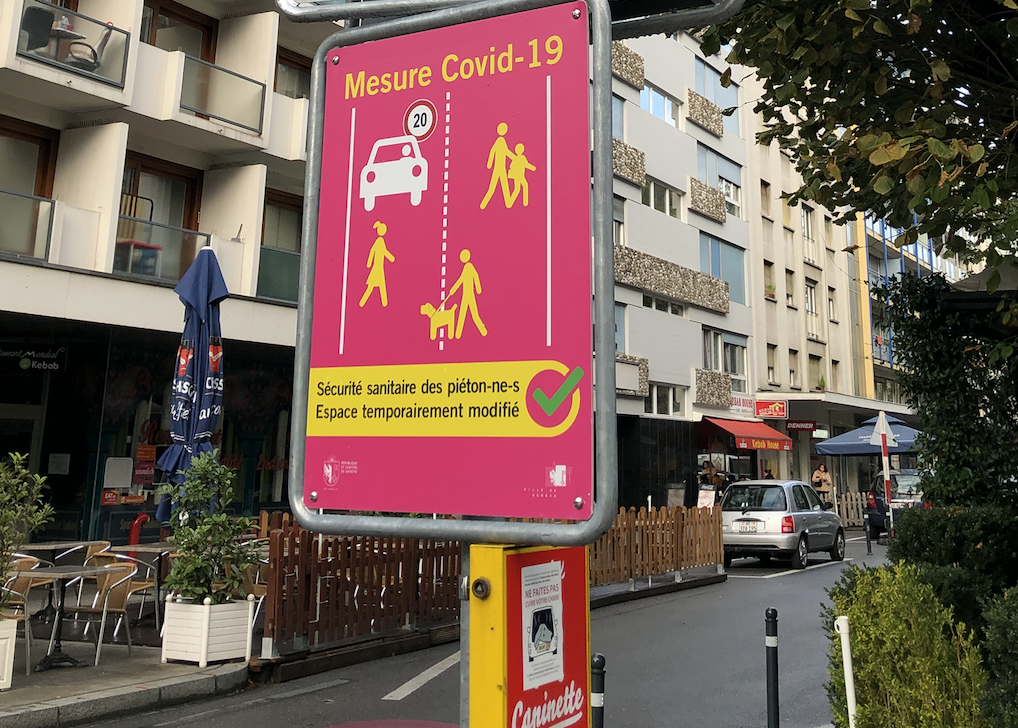
Many public authorities have turned to tactical urbanism in the Covid-19 crisis to give more space to cyclists and pedestrians. Nathalie Ortar (ENTPE Lyon) and Patrick Rérat (OUVEMA UNIL) have launched a call for papers for a special session they organize at the conference of the Royal Geographical Society.
The Covid-19 crisis has prompted many public authorities to rethink public and road spaces to promote means of transport that are both efficient and adapted to the health context. The creation of temporary cycle paths was initiated in South American cities such as Bogota. They appeared as a simple and inexpensive way to meet health requirements while avoiding the negative consequences of a modal shift towards the automobile and of a desertion of public transport.
Since these first implementations, local authorities around the globe have created temporary or pop-up pcycle paths or extended public spaces. By doing so they have turned to "tactical urbanism", i.e. the installation of temporary layouts using street furniture easy to install (and to remove). While tactical urbanism referred first to grassroot movements, its principles have been adopted by public authorities with the objectives to test new layouts of streets, intersections or public spaces.
This session seeks to address the implementation of tactical urbanism, its materiality and geography as well as its impacts and reception. Selected papers will address one of the following questions:
- What kind of projects have been implemented? What are their materialities?
- What is the geography of tactical urbanism projects during the Covid crisis both at the international and intra-urban scale?
- How do tactical urbanism projects relate to existing planning policies/tools? How are they made compatible with traditional approaches? How do they shed light on local dynamics in terms of mobility and planning policies?
- What are the roles of grassroot movements and civil society? How have they turned to tactical urbanism?
- How tactical urbanism can be regarded as a circulating planning model? How do its principles and key ideas circulate between places?
- What were the impacts of tactical urbanism measures on spatial practices (e.g. increase in cycling, diversity in public space use)? Which social groups have benefited from them?
- How were these measures received? What political / social groups contested them and according to which rationale?
Please send your abstract of no more than 250 words including a title, and the names, affiliations and email addresses of all authors to the session organisers (Nathalie.ORTAR@entpe.fr and Patrick.rerat@unil.ch) by 1st March 2021.
We hope to be able to organize the session in London depending on the health situation. Please indicate whether you expect to present in person or remotely. (Confirmation by the conference organisers of whether in-person elements will be possible is due in April.)
Nathalie Ortar, ENTPE-Laboratoire Aménagement Economie Transports, University of Lyon, France, Nathalie.ORTAR@entpe.fr
Patrick Rérat, Observatory for Cycling and Active Mobilities & Institute of Geography and Sustainability, University of Lausanne, Switzerland, Patrick.rerat@unil.ch
